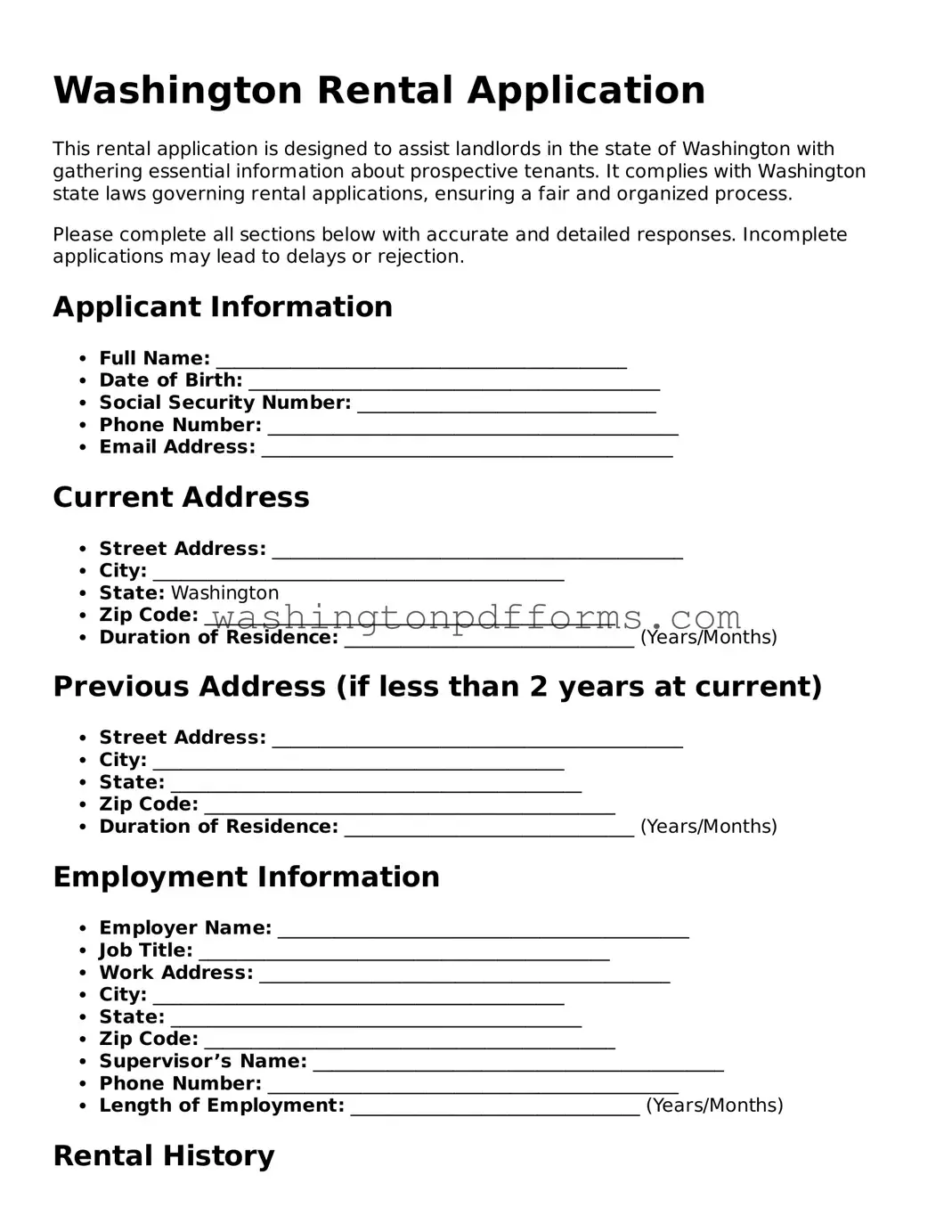Filling out a rental application in Washington can be a straightforward process, but many applicants make common mistakes that can hinder their chances of securing a rental. One frequent error is leaving sections of the application blank. Each part of the form is designed to gather important information. Omitting details can raise red flags for landlords and property managers.
Another mistake is providing inaccurate information. This can include incorrect phone numbers, misspelled names, or wrong employment details. Landlords often verify the information provided, and discrepancies can lead to disqualification. It is essential to double-check all entries for accuracy before submitting the application.
Many applicants also fail to disclose their rental history completely. Landlords typically look for a comprehensive rental history, including previous addresses and landlord contact information. Incomplete histories can lead to questions about reliability and trustworthiness.
Some individuals neglect to include necessary documentation, such as proof of income or identification. Most landlords require these documents to assess the applicant's financial stability. Without them, the application may be considered incomplete and could be rejected.
Providing insufficient references is another common mistake. Applicants should aim to include a mix of personal and professional references. Landlords appreciate hearing from individuals who can vouch for the applicant’s character and reliability.
Additionally, some applicants overlook the importance of their credit history. A poor credit score can significantly impact the application process. It is advisable to check credit reports beforehand and address any issues that may arise.
Misunderstanding the application fee is also a frequent error. Some applicants are surprised by the non-refundable nature of these fees. It is crucial to be aware of the costs involved and ensure that payment is submitted promptly to avoid delays.
Another mistake is failing to follow up after submission. A proactive approach can demonstrate interest and professionalism. Applicants should consider reaching out to the landlord or property manager to inquire about the status of their application.
Lastly, neglecting to read the fine print can lead to misunderstandings. Each rental application may have specific terms and conditions. Understanding these details can prevent future disputes and ensure a smoother rental process.
